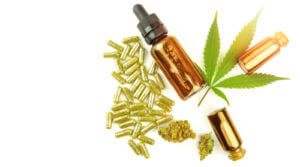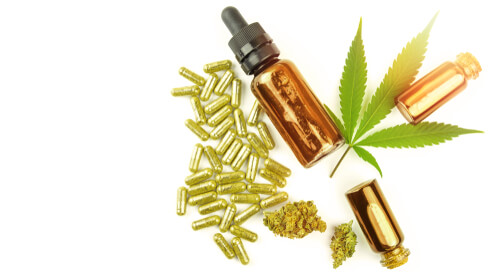
Hemp oil is made by cold-pressing the seeds of the hemp plants. According to the Farm Bill of 2018, all hemp-derived products are legal in the United States. After the bill the use of hemp oil, hemp seed oil, and CBD oil products increased rapidly, owing to the health benefits offered by the hemp plant.
Today, there is no restriction in cultivating industrial hemp in most of the states and now hemp has become one of the most profitable crops in the United States. Hemp is now a one billion dollar market and still growing exponentially.
Organic Hemp Farming
Cultivation of hemp is easier than most crops because it will easily thrive in almost all environments, except desert and high mountain regions. Warm-weather areas with soil rich in organic materials are ideal for hemp plants. Hemp may not grow well in soil that is excessively wet.
The best practice is to test the soil before starting cultivation. When you test the soil, test for the levels of sulfur, potassium sulfate, and rock phosphate, and make sure that the levels are not too high. The ground conditions should remain consistent for about 108 to 120 days, which is the growing cycle of hemp.
Before planting the seeds, the soil should be tilled and the hemp seeds sown directly to the soil. It is better to sow the hemp seeds close to each other. Also, it is recommended to roll and pack the soil after planting it. For the first six weeks, you need to make sure that the seeds are irrigated properly.
Hemp plants are usually drought tolerant. However, they are sensitive to dryness and more fragile in the first six weeks. There are strong regulations regarding the use of pesticides during the cultivation of hemp. The plant is reasonably resistant to pests and diseases and also the growth of the hemp plant usually outpaces the surrounding weeds, which means it doesn’t require too many pesticides.
Usually, special farming equipment is not needed for the cultivation of hemp. The stalks of the hemp that is grown for fibers need to be processed differently. Therefore, special machinery may be needed. The main problem is that the machinery used for this type of processing is not always readily available in those states where there is no widespread hemp cultivation.
Most farmers avoid the purchase of costly equipment by hiring a company that processes raw plant material at an affordable rate. The head of the hemp plant will become fully matured in about 90 to 100 days. The seed bracts expose the seeds once they become fully matured and the hemp plant can be harvested at this point, which is about 100 to 120 days after the seeds are planted.
After harvesting the hemp, make sure to remove all the foreign materials from the grain. The harvest needs to be stored properly until processing and the storage space must be properly aerated to avoid spoiling.
Hemp Oil Extraction
There are currently five main hemp oil extraction processes. They are Soxhlet, Percolation process, Superficial fluid extraction, Ultrasonication, and Pyrolysis.
The conventional extraction process of hemp oil is Soxhlet. It is the most economical extraction process and it is also user-friendly. The next one is the percolation process, which is based on leaching. The information on the use of this extraction process for extracting hemp oil is very limited.
Superficial fluid extraction uses CO2 as the solvent for extracting the hemp oil from the plant material. As the name suggests, ultrasonication uses ultrasonic frequencies to extract hemp oil. This process reduces the extraction time because of the dual effects of chemical and physical separation.
Pyrolysis is another extraction process that is gaining popularity among hemp oil manufacturers. It is a thermal decomposition technique carried out in an inert atmosphere. The by-products of this extraction process are used in the petroleum industry.
All the extraction processes have five steps in common. The first step is the preparation of raw materials. The second step is setting up the equipment. The third step is adding the raw materials to the extraction vessels and setting the input parameter. The next two steps depend on the extraction processes.
Superficial fluid extraction needs an additional co-solvent for extracting hemp oil. The dissolution of the solute is required for the percolation process. In the case of pyrolysis, it is subjected to bio-oil production.
Ultrasonication is the most efficient extraction process because it has the greatest economic yield. Other extraction processes have similar economic yields.
Final Thoughts
Hemp oil offers a lot of health benefits because of the presence of all cannabinoids and other essential compounds. Many people are using hemp oil for preventing several skin problems and also to improve their skin health. The nutrient profile of the hemp oil provides a lot of other health benefits too. Hemp oil has positive effects on our cardiovascular system and many doctors are now recommending its use.

